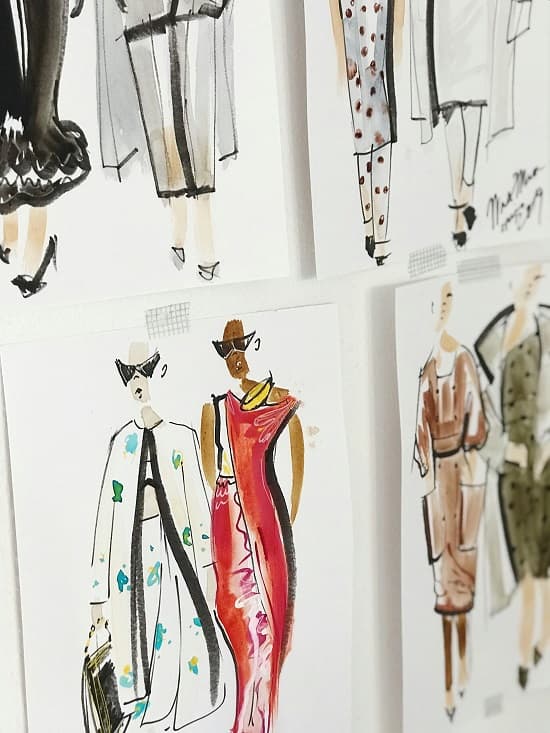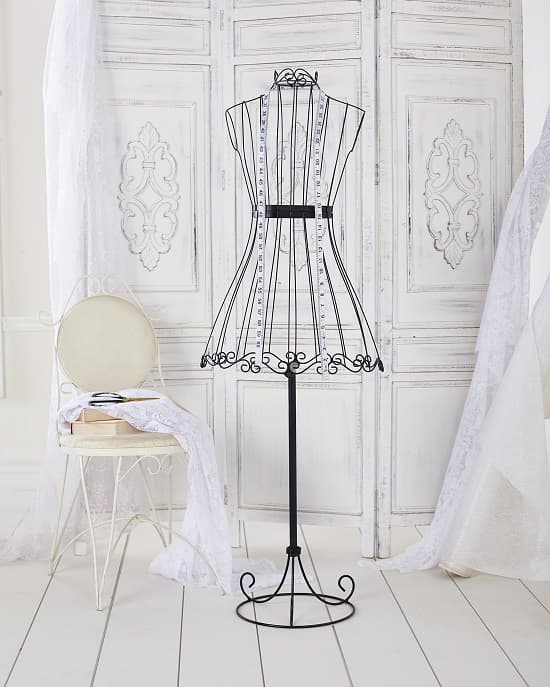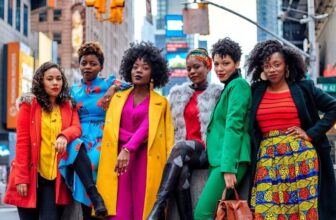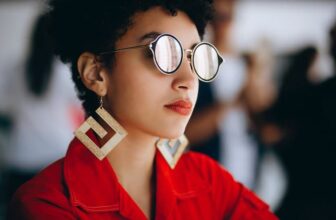People often confuse fashion design with tailoring, lacking awareness of the clear distinction between the two.
When we talk about fashion, it’s important to understand the different jobs people have in garment production. Although both key players, the tailor and fashion designer contribute to clothing creation, their methods and approaches differ significantly.
A helpful analogy could be likening a tailor to a builder and a designer to an architect. Tailors specialize in customizing clothes to fit individual clients, paying close attention to details like measurements and personal preferences. They excel at alterations and repairs, ensuring clothing fits perfectly.
Fashion designers, on the other hand, are responsible for creating new clothing designs. They draw inspiration from various sources and are trend-focused, aiming to innovate and set new fashion directions.
It’s worth noting that without a fashion designer, a tailor’s role would primarily involve repairing damaged garments rather than creating new designs. Not all tailors have the same skills as fashion designers, as the latter requires a unique set of abilities, including creativity, artistic vision, and the ability to stand out in the competitive fashion industry.
Recognizing these differences helps us appreciate the unique contributions of each profession without preferring one over the other.
Fashion Designer Vs Tailor: The Big Difference
When we compare a fashion designer and a tailor, it’s important to understand their distinct approaches to clothmaking. A tailor relies on established patterns and traditional techniques, honed over years of practice. They work directly with customers’ measurements and chosen designs, focusing on precision and fit.
On the other hand, a fashion designer’s process involves extensive planning and creativity. They spend more time conceptualizing and sketching their designs on paper before any physical work begins. This emphasis on planning allows them to create unique and innovative clothing concepts.
 Photo: Charlota Blunarova/Unsplash
Photo: Charlota Blunarova/Unsplash While it’s easy to confuse the two professions because they use similar tools and produce garments, the way they work is vastly different. And, the major difference between tailors and fashion designers lies in the nature of their work and the level of creativity involved.
A detailed highlight of the major differences include;
Profession and Education:
Tailors specialize in making or repairing clothes, typically without needing formal education, although they may attend workshops or classes.
In contrast, fashion designers require a degree in design and often undergo internships to gain expertise in creating new clothing designs. While some fashion designers may also possess tailoring skills, the level of creativity and training differs between the two professions.
Work Environment:
Fashion designers typically work in studios or offices, collaborating with buyers, merchandisers, and other industry professionals to bring their designs to market. Tailors, on the other hand, usually work in workshops or stores, focusing on crafting custom-fit garments based on clients’ preferences and measurements.
Responsibilities:
Fashion designers are involved in various tasks such as designing clothing, selecting fabrics and colors, communicating with clients, and participating in fashion shows to showcase their collections.
Tailors primarily concentrate on creating or repairing garments, ensuring they align with clients’ preferences, measurements, and current trends.
Career Opportunities and Salary:
Fashion designers have a broader range of career options, including working for fashion houses, being self-employed, or venturing into marketing and advertising.
They also tend to earn higher salaries due to their education, experience, and creative contributions. In contrast, tailors typically have limited career paths, either running their own business or working for clothing manufacturers, with comparatively lower salaries.
Job Description of a Fashion Designer
Fashion designers are the driving force behind the conceptualization of new clothing designs, relying on their “creative vision” to draw inspiration from diverse sources such as art, culture, history, and trends.
Their design process typically begins with sketching ideas and compiling mood boards to visualize concepts, followed by creating patterns and selecting fabrics to bring their designs to life. Collaborating with teams of pattern makers, sample makers, and other professionals helps refine their creations.
 Photo: Roberto Martinez/Unsplash
Photo: Roberto Martinez/Unsplash An integral aspect of a fashion designer’s work is “trend forecasting,” wherein they stay abreast of current and upcoming trends within the fashion industry. This involves analyzing market demands, discerning consumer preferences, and understanding cultural influences to ensure that their designs resonate with their target audience.
Many fashion designers either establish their own brands or contribute their expertise to renowned fashion houses. In doing so, they help shape the brand’s identity through their distinctive design aesthetic, strategic marketing campaigns, and overall brand image.
Fashion designers are synonymous with the glitz and glamour of fashion shows, where they unveil their latest collections through captivating runway shows, engaging presentations, or digital platforms. These events are instrumental in garnering widespread exposure, attracting potential buyers, and influencing trends within the fashion industry.
Job Description of a Tailor
Tailors specialize in creating bespoke clothing that is tailored to fit individual clients’ unique body shapes, measurements, and style preferences. They conduct meticulous measurements, paying attention to nuances such as posture, body proportions, and fit preferences.
The customization process involves consultations with clients to understand their lifestyle, aesthetic preferences, fabric choices, and design details.
Tailors are renowned for their precision and attention to detail, ensuring that every stitch, seam, and finish reflects impeccable craftsmanship. They use traditional tailoring techniques, such as hand-sewing, pattern matching, and fabric manipulation, to achieve superior fit and quality.
In addition to creating new wears, tailors excel in alterations and repairs, breathing new life into existing clothing items. They skillfully alter hemlines, adjust waistlines, resize garments, and repair damages to enhance comfort, fit, and longevity.
For tailors, business is almost always a client-centric one where they have direct relations with their customers, offering personalized service, attention to detail, and a seamless experience. They provide guidance on style choices, fabric selections, and design options, ensuring that clients feel confident and satisfied with the final outcome.
Tailors are the ones who ensure a consistency with what the fashion designers conceptualize. This means that they create all of the wardrobe staples such as suits, coats, dresses, and formal attire that stand the test of time, transcending fleeting trends.
Where Does the Role of the Fashion Designer and That of the Tailor Intersect?
The descriptions above emphasize that while a tailor creates custom garments, a designer creates entire collections and this means that one can’t totally function effectively without the impact of the other. This intersection highlights where they have a common meeting point in merging the art of customization with the broader vision of fashion design.
In ready-to-wear collections, designers may work with tailors to offer customization options, tailoring garments to specific measurements or making alterations for personalized touches. Tailored elements like jackets or dresses are common in designer collections, where tailors bring their expertise in fit and finishing details.
During fashion shows, tailors assist backstage, ensuring garments fit models perfectly and making adjustments as needed, contributing to the overall success of the showcase.
This collaboration goes to show the combination of creative vision and technical skill, resulting in high-quality, tailored clothing that meets individual needs and reflects the designer’s aesthetics.
Photo: Vladimir Vladimirov/Unsplash






